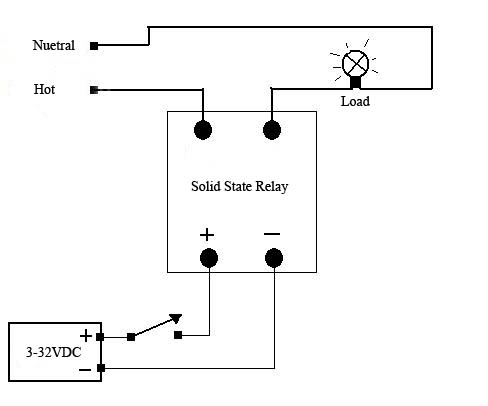
*Solid State Relays - Controlling AC Circuits With DC Voltage*
Sometimes it's handy to be able to control an AC powered item with a low voltage DC source. For very low current applications, there are readily available mechanical relays. For high current, the options are greatly reduced, especially when using a very small DC control voltage. You could build another circuit to drive a big relay, but there's a simple, inexpensive solution. A solid state relay. No moving parts, long life, wide operating voltage.
My MorningStar charge controller turns on a 12V 10A relay when the sun goes down. This can be used for controlling lighting circuits for example. But how do you get this relatively low current output to operate 120VAC lighting?
Ebay to the rescue. These solid state relays are $7.99, free shipping. Sent from overseas, takes ~10 days to arrive. The seller I've purchased from was giorgio11185. I'm sure the ones I am using are Chinese knock-offs, but they work fine so far. One has been in use for the past two years, operating my garden lights from dusk to dawn. The specific model I have is rated at 3-32VDC to operate the relay, 24-480VAC on the output side, up to 25A, consuming 3-25mA on the DC side.

This is very easy to connect. I took an old (homebrew) extension cord, and cut it. One end will be used for the AC power source, the other end for the AC power output. The neutral and ground wires are connected from the input to the output. The only wire that is actually connected to the relay is the hot wire. The hot input wire connects to one of the AC junctions on the relay, the hot output wire connects to the other AC junction. The two DC control wires connect to the other side of the relay, and are marked as being polarity sensitive.
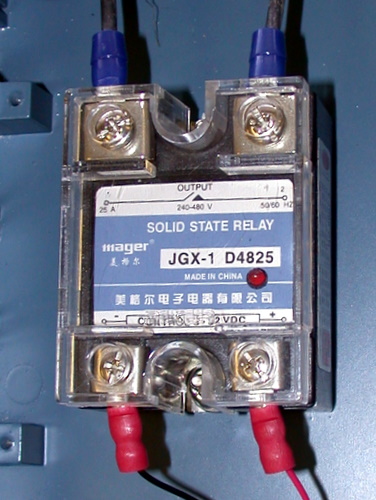
If you look closely, the decal on the relay shows the output voltage as being 240-480V. It's actually rated for 24-480V. Might be why they are so cheap, and available on Ebay. Nevertheless, they work well with 120VAC applications.
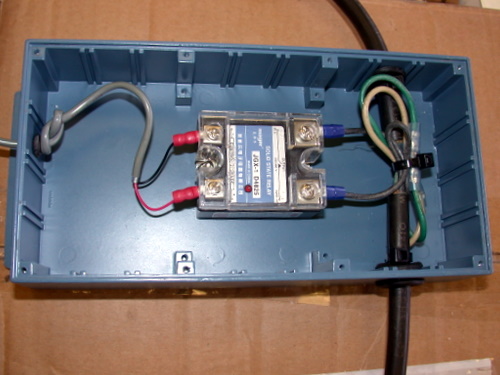
Neutral to neutral, ground to ground, hot (input) to relay, hot (output) to relay. DC control wires on the other side of the relay. The small red LED illuminates when a DC control voltage is present. Grommets were used on the holes to prevent damage to the wires. Tie wraps were used on the AC wires inside the box as strain reliefs.
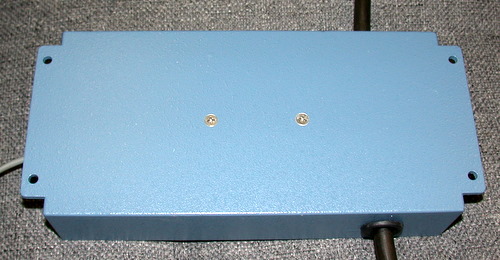
I use Pomona brand project boxes, but you can use what you have on hand. I did countersink the screws used to mount the relay. This allows the box to mount to a flat surface.
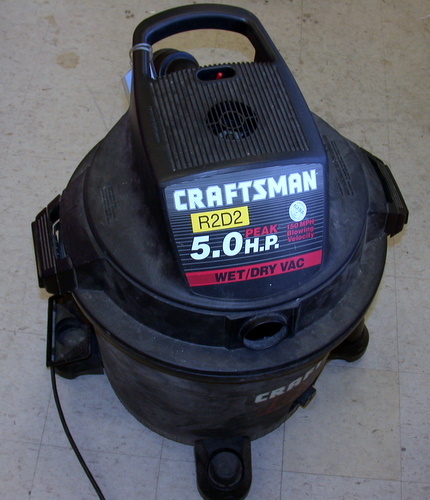
This is one of the largest loads I could find in the shop. This solid state relay will actually be used to control a vacuum used on a Lower Body Negative Pressure (LBNP) system in our medical lab. A pressure controller has a 5VDC output, and this will be used to turn the vacuum on/off. Yes, this one is a work related project! My boss does appreciate that my home projects benefit the shop too.
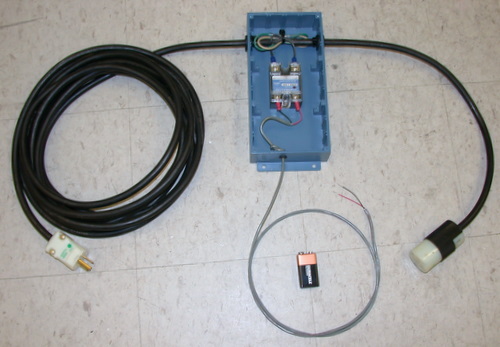
Here's the overall view. A long supply cord on one side, a shorter output cord on the right. The DC control wires at the bottom.
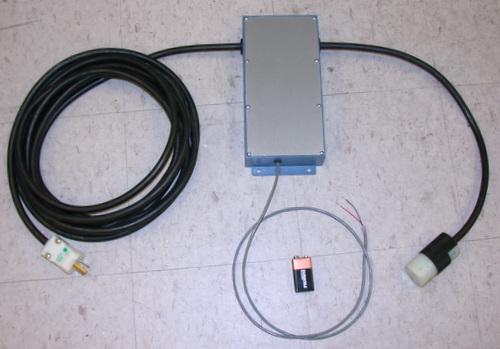
Lid installed, ready to install.
I connected the shopvac to the solid state relay box, and plugged it into the wall outlet. No smoke, so far so good. I then used a 9VDC battery to turn the shopvac on/off. Works fine. The system I made for home operates the 120VAC/12VAC transformer for my Malibu garden lights. The only modification was I added a switch that allows me to bypass the relay (connects the input/output hot wires) when flipped. This allows me to work on the garden lights during the day, without having to worry about the control voltage side of the circuit.
2manytoyz
www.alpharubicon.com
All materials at this site not otherwise credited are Copyright © 1996 - 2010 Trip Williams. All rights reserved. May be reproduced for personal use only. Use of any material contained herein is subject to stated terms or written permission.